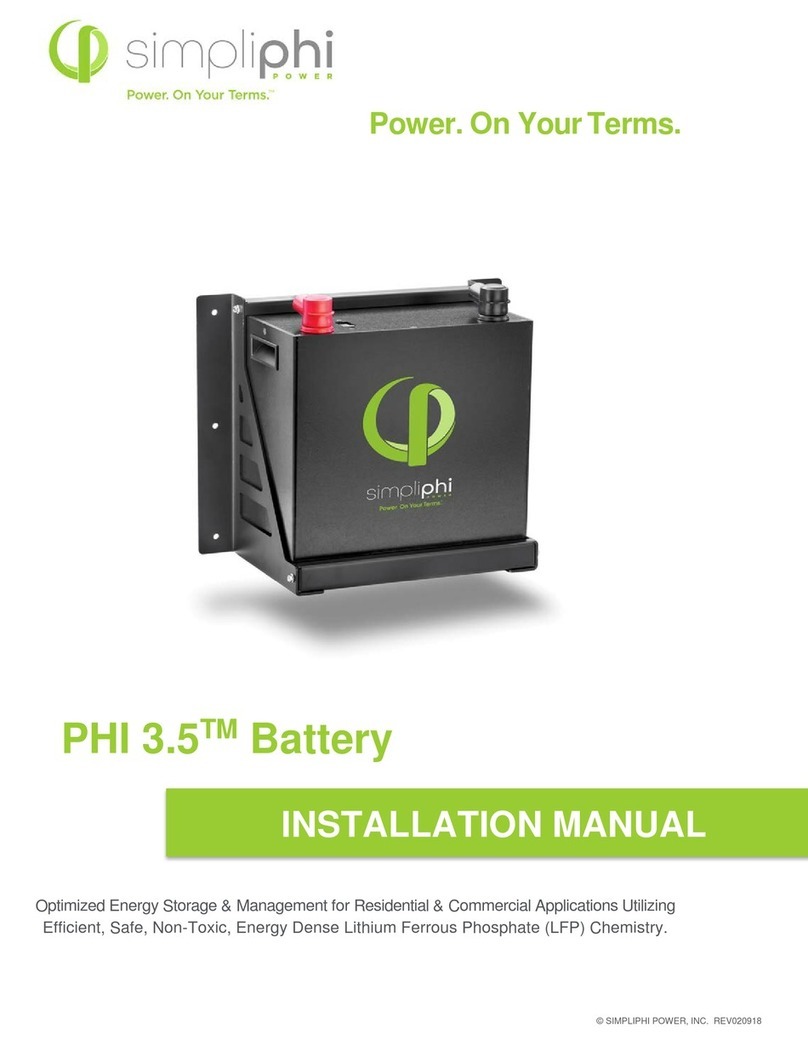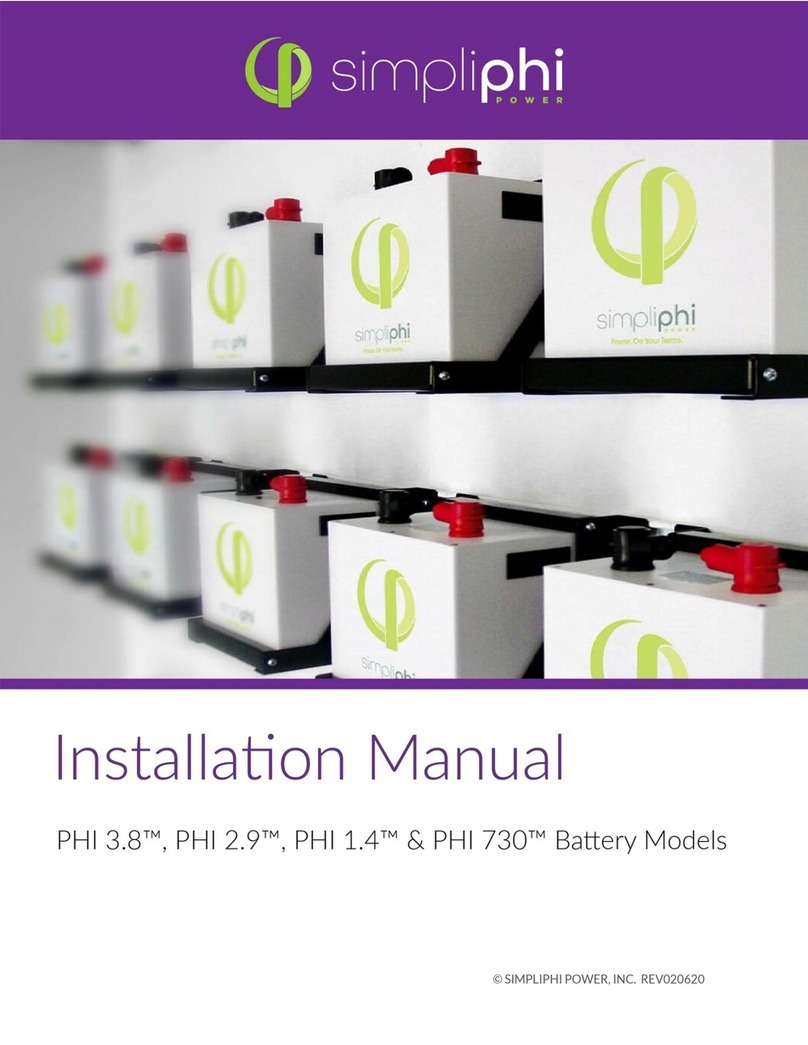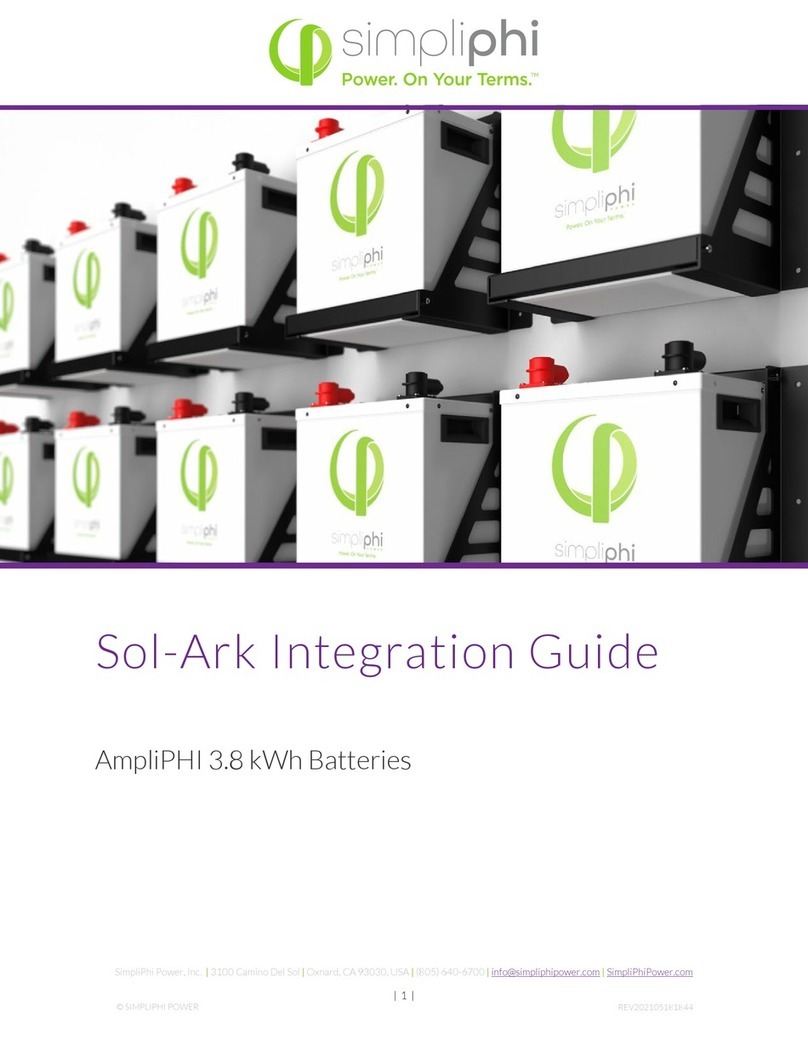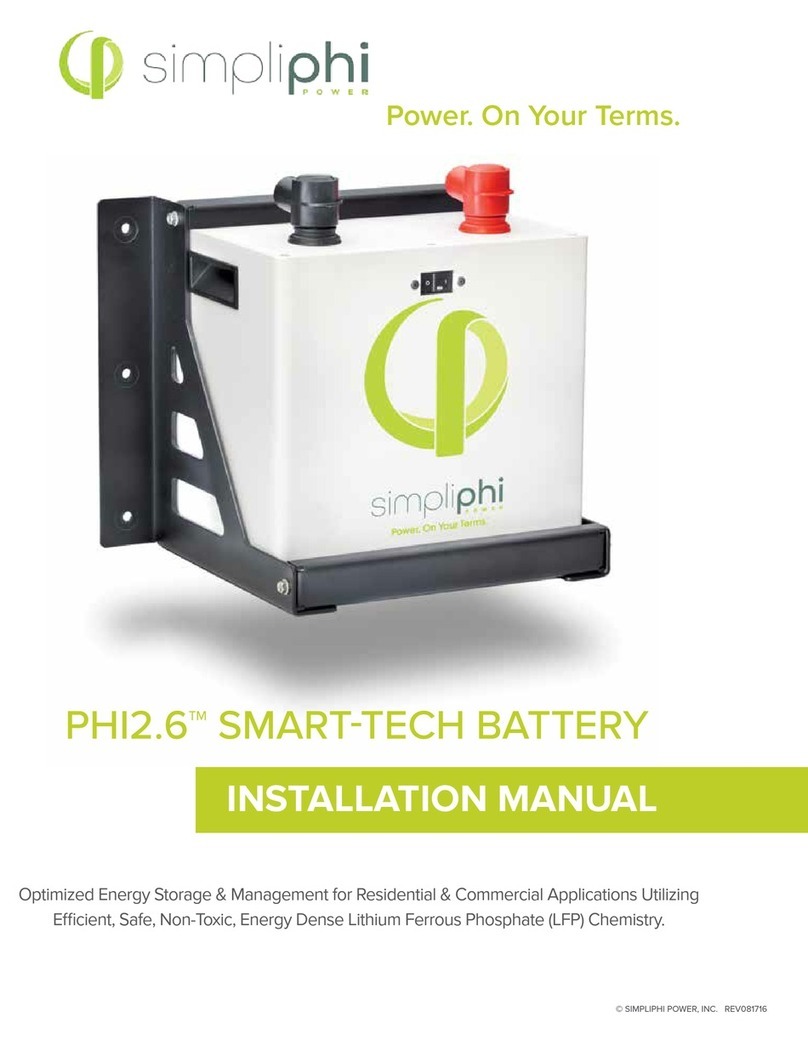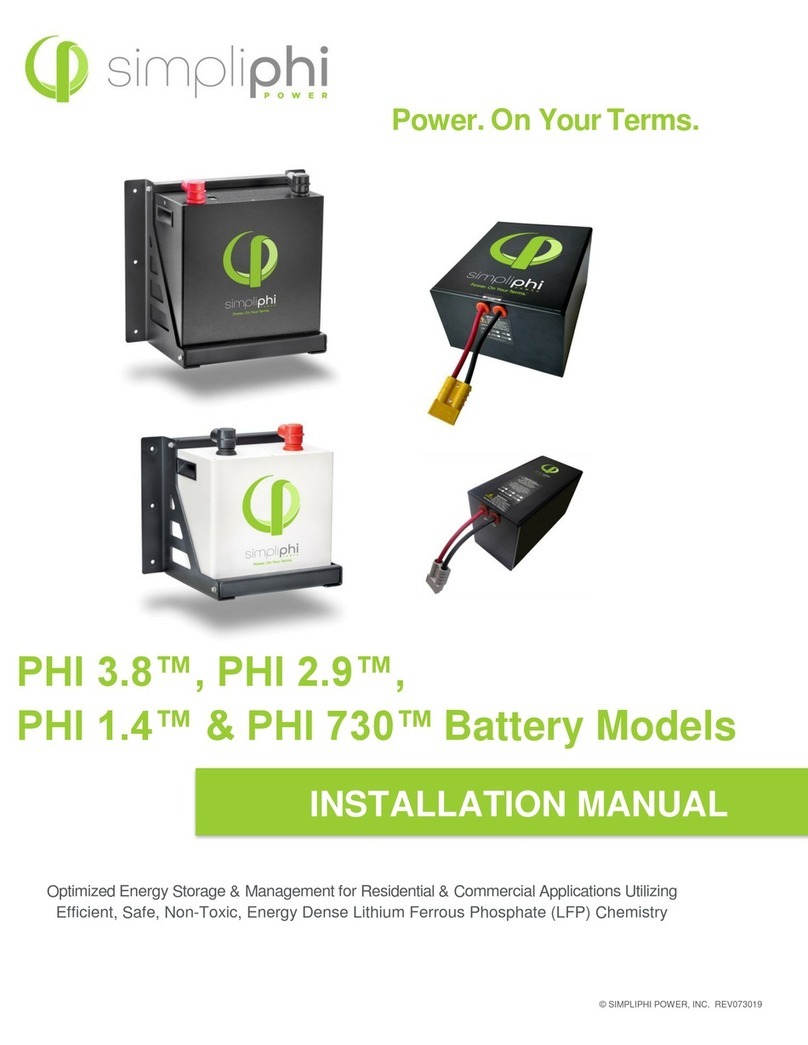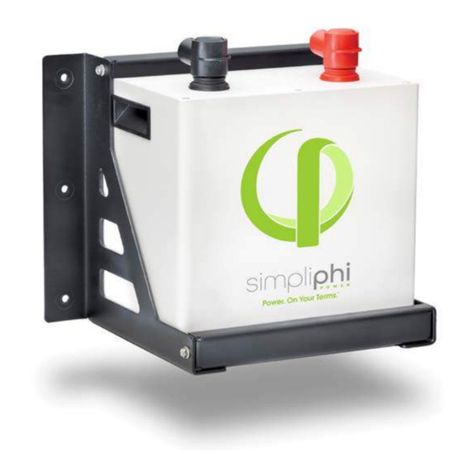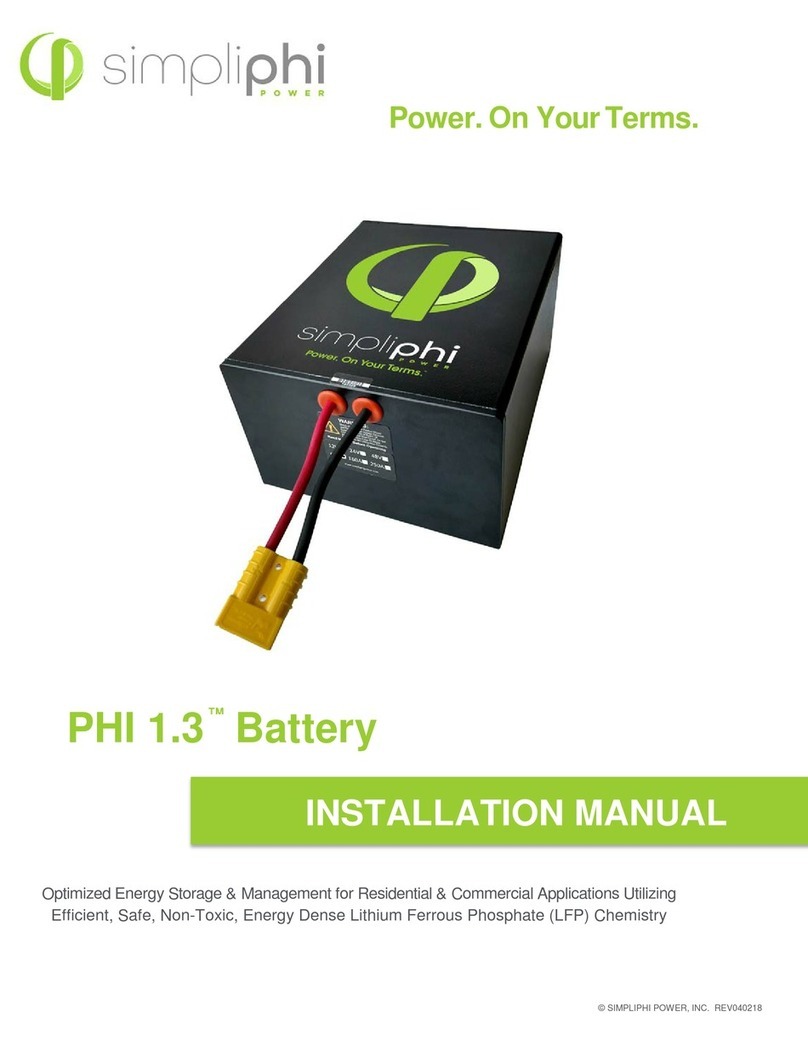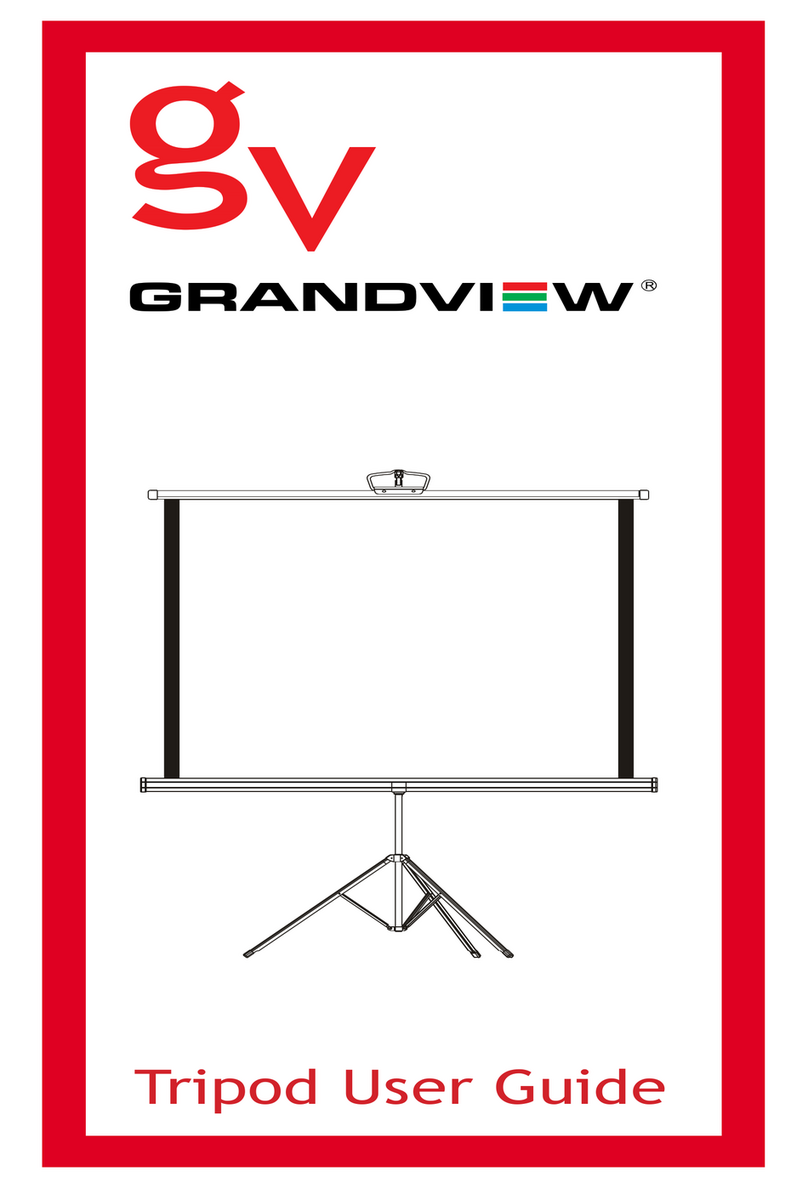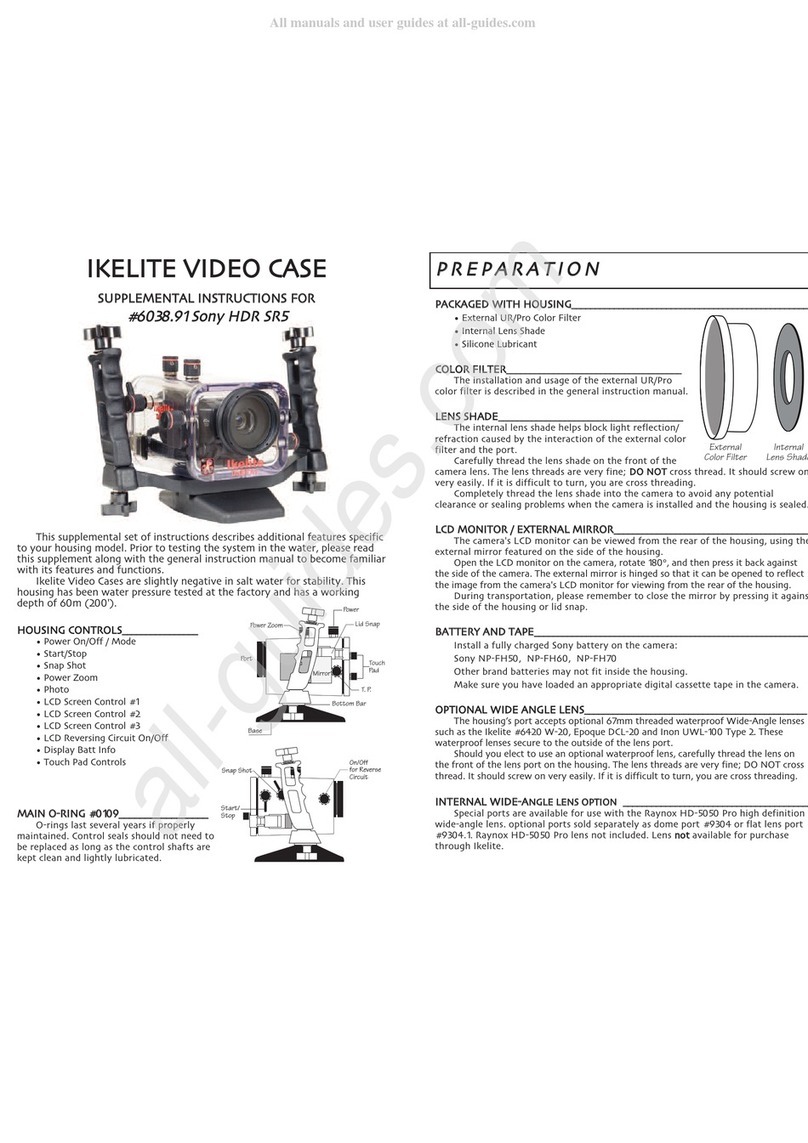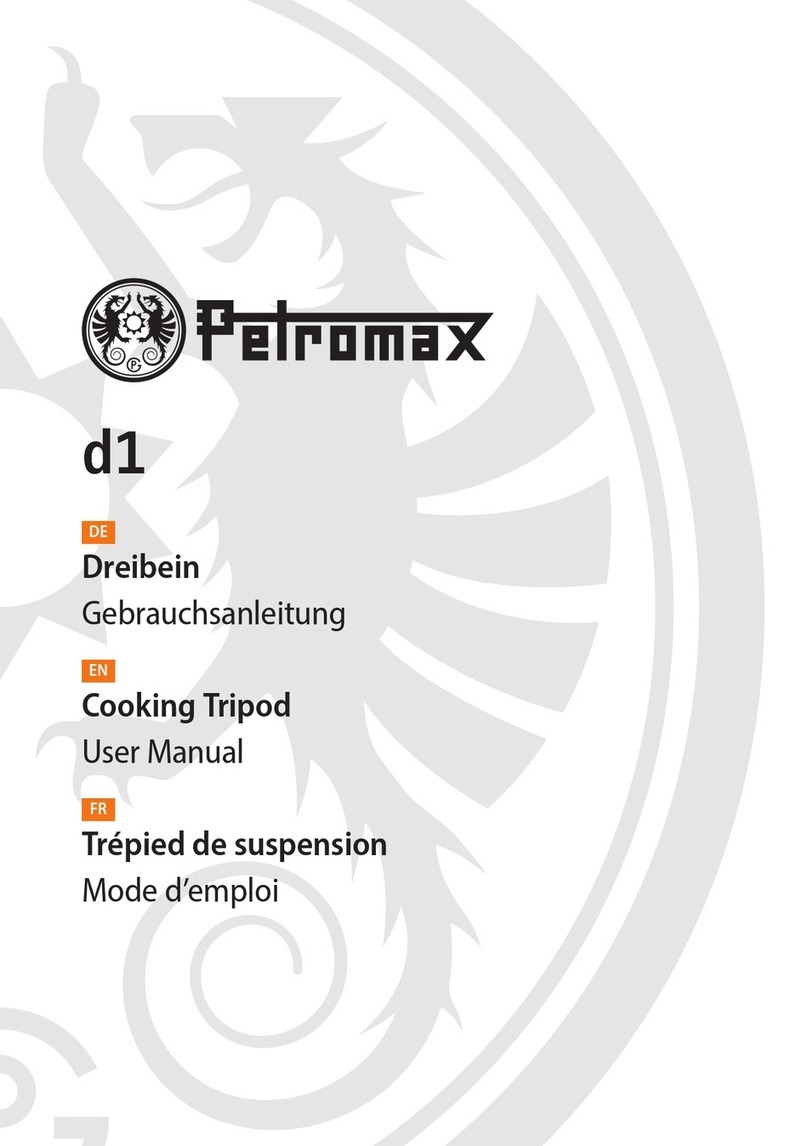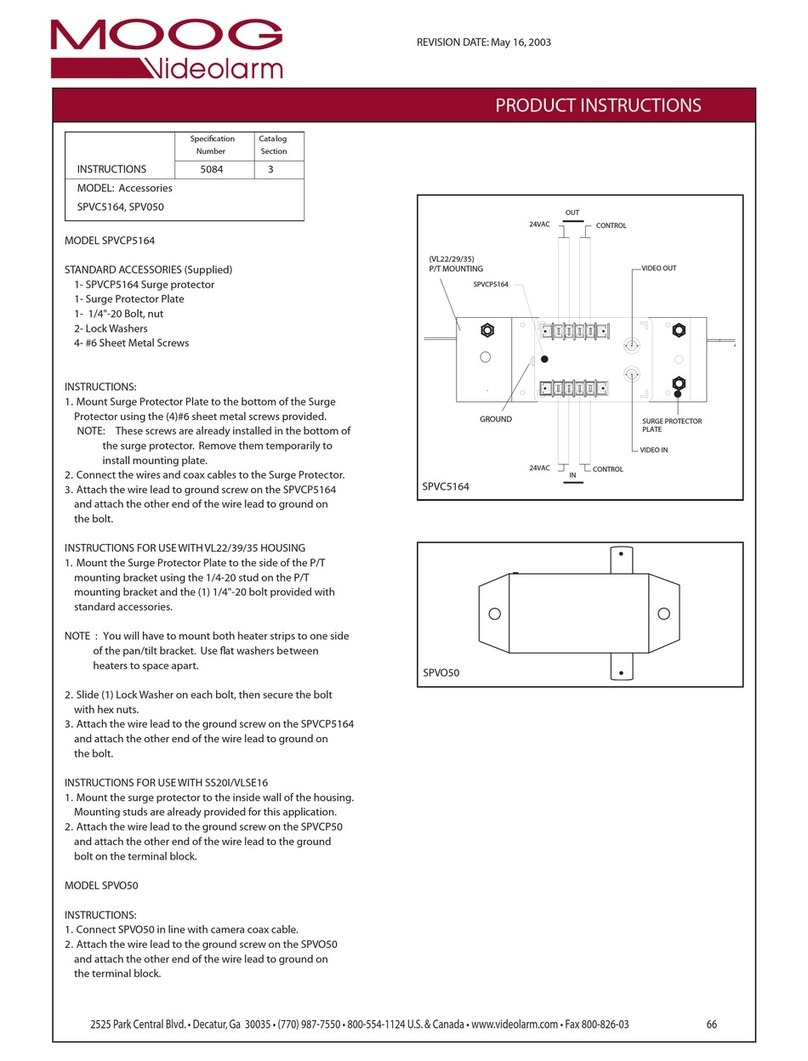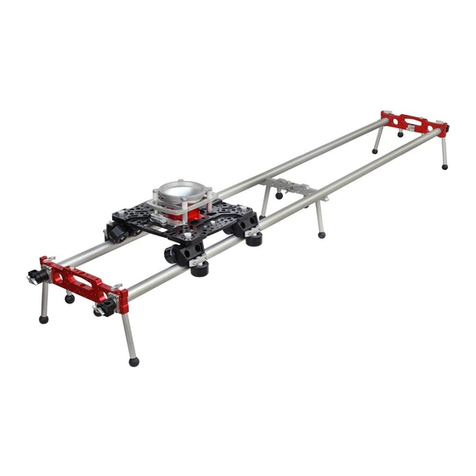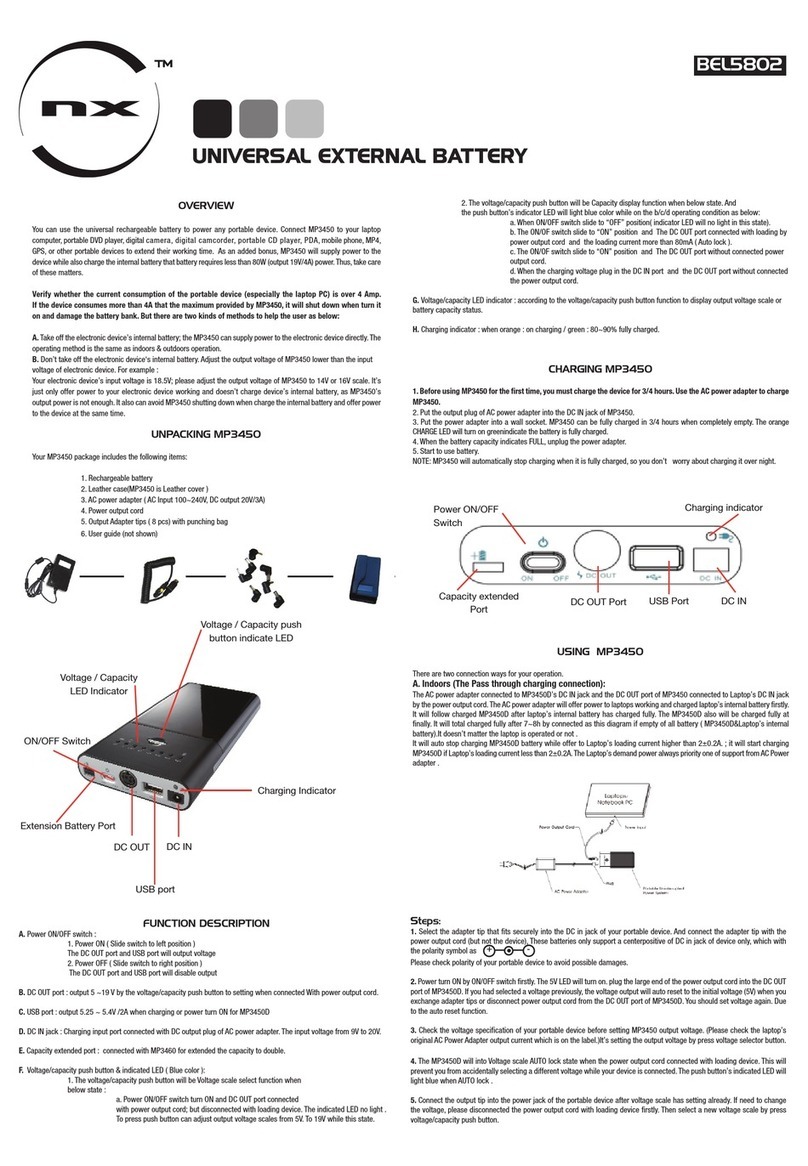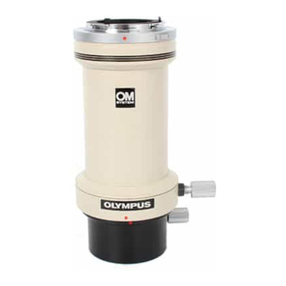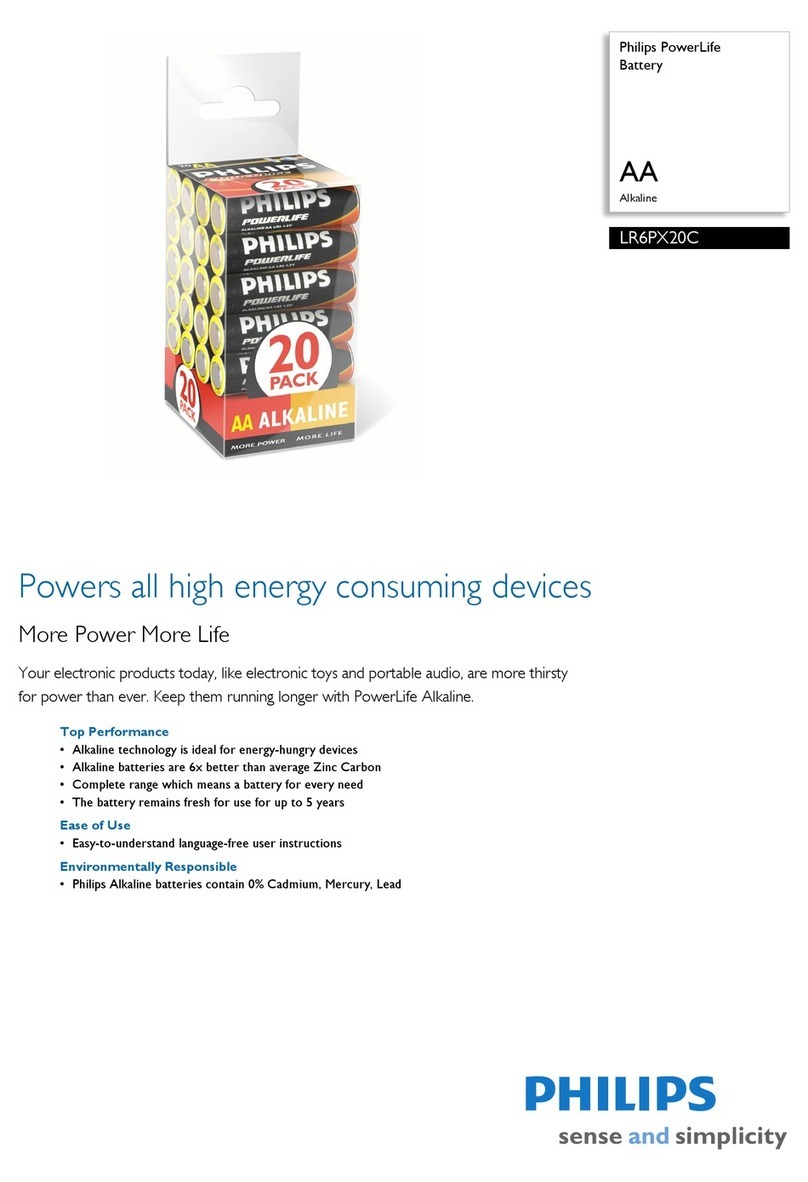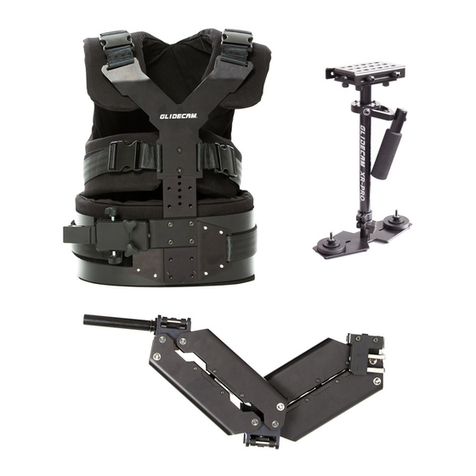SimpliPhi AmpliPHI User manual

SimpliPhi Power, Inc. |3100 Camino Del Sol |Oxnard, CA 93030, USA |(805) 640-6700 | info@simpliphipower.com |SimpliPhiPower.com
| 2|
REV202008141720
© SIMPLIPHI POWER
SimpliPhi Your Energy Security
and Independence
and gain control of your own power.
SimpliPhi Power helps you manage your power as a personal resource. Anytime.
Anywhere. SimpliPhi energy storage optimizes integration of any power
generation source – solar, wind, generator – on or off grid, and protects your
home and mission-critical business functions from power outages and
intermittency. SimpliPhi storage technology reduces operating temperature
constraints, the risk of thermal runaway, and eliminates toxic coolants. Safe
lithium ferrous phosphate (LFP). No cobalt. No toxic hazards.
SimpliPhi’s battery technology utilizes the industry’s most environmentally
benign chemistry (LFP) combined with proprietary architecture and power
electronics (BMS) to create a portfolio of high performance, scalable and
enduring energy storage solutions that provide power security, resilience and
daily cycling for savings on your utility bill – all with a 98% efficiency rate.
SimpliPhi Power offers proprietary, commercially availableenergy storage and management systems that are
safe, non-toxic, reliable, durable, efficient, highly scalable, and economical over the lifetime of the PHI Battery.

SimpliPhi Power, Inc. |3100 Camino Del Sol |Oxnard, CA 93030, USA |(805) 640-6700 | info@simpliphipower.com |SimpliPhiPower.com
| 3|
REV202008141720
© SIMPLIPHI POWER
Table of Contents
1.0 – Introduction ........................................................................................................................................................................................................5
1.1 – Online Resources.............................................................................................................................................................................................5
1.2 – Technical Support.......................................................................................................................................................................................5
1.3 – Product Overview ......................................................................................................................................................................................5
1.3.1 – Battery Management System (BMS)......................................................................................................................................5
1.3.2 – Built-In Breaker..................................................................................................................................................................................6
1.3.3 – Networking Communications Cables & Plugs ..................................................................................................................7
1.4 – Specifications ................................................................................................................................................................................................7
2.0 –Safety .......................................................................................................................................................................................................................8
2.1 – General Safety Instructions ..................................................................................................................................................................8
2.2 – Response to Emergency Situations ..................................................................................................................................................8
3.0 – Pre-Installation..................................................................................................................................................................................................9
3.1 – AmpliPHI Battery Performance .........................................................................................................................................................9
3.2 – AmpliPHI Battery System Sizing ........................................................................................................................................................9
3.2.1 – Sizing for All Systems ......................................................................................................................................................................9
3.2.2 – Additional Sizing Considerations for AC Coupled Systems.......................................................................................9
4.0 – Installation ....................................................................................................................................................................................................... 10
4.1 – Installation Options ............................................................................................................................................................................... 10
4.2 – Environmental Considerations ....................................................................................................................................................... 10
4.2.1 – Charging at Temperatures Below Freezing.................................................................................................................... 10
4.2.2 – Explosive Gas Precautions....................................................................................................................................................... 11
4.2.3 – Anti-Corrosion Protection....................................................................................................................................................... 11
4.3 – Mounting Hardware ............................................................................................................................................................................. 11
4.4 – Dimensions and Weight...................................................................................................................................................................... 12
4.5 – AmpliPHI Battery Connection Terminals.................................................................................................................................. 12
4.5.1 – Batteries with Threaded Studs.............................................................................................................................................. 12
4.5.2 – Torque Batteries with Threaded Studs............................................................................................................................. 13
4.6 – Electrical Wiring...................................................................................................................................................................................... 13
4.6.1 – Increasing Storage Capacity via Parallel Wiring .......................................................................................................... 13
4.6.2 – Parallel Wiring Batteries with Threaded Studs using Battery Cables ............................................................. 14
4.6.3 – Parallel Wiring Batteries with Threaded Studs using Interconnecting Busbars........................................ 17
4.7 – Communications Wiring..................................................................................................................................................................... 19
4.8 – Battery System Commissioning...................................................................................................................................................... 21
4.9 – Battery Bank Expansion...................................................................................................................................................................... 23
5.0 – Programming.................................................................................................................................................................................................. 24
5.1 – Operating Parameters per Warranty.......................................................................................................................................... 24
6.0 – Troubleshooting ........................................................................................................................................................................................... 25
Appendix A – AmpliPHI Battery Safety & Green Attributes, Certifications............................................................................ 26
Appendix B – AmpliPHI Approved External Chargers ........................................................................................................................ 28

SimpliPhi Power, Inc. |3100 Camino Del Sol |Oxnard, CA 93030, USA |(805) 640-6700 | info@simpliphipower.com |SimpliPhiPower.com
| 4|
REV202008141720
© SIMPLIPHI POWER
CAUTION: THIS MANUAL IS SPECIFIC TO THE AMPLIPHI BATTERIES THAT FEATURE
INTERNAL COMMUNICATIONS WITHIN THE BMS. DO NOT FOLLOW THESE
GUIDELINES IF YOU ARE USING THE STANDARD PHI PRODUCT LINE. PLEASE
CONSULT THE INSTALLATION MANUAL SPECIFIC FOR YOUR BATTERIES FOUND
HERE: SIMPLIPHI PHI BATTERY INSTALLATION MANUAL LINK
CAUTION: THESE 3 THINGS WILL VOID THE AMPLIPHI WARRANTY & DAMAGE THE
BATTERIES. READ IN FULL PRIOR TO BATTERY INSTALLATION
The following abbreviated guidelines do NOT encompass all AmpliPHI battery Warranty details. Failure to
adhere to the Warranty and Installation Manual requirements will Void the Warranty. Read the battery’s
complete Warranty prior to installation and register the battery according to the form found at the bottom of the
same web page address: https://simpliphipower.com/wp-content/uploads/documentation/ampliphi-
series/simpliphi-power-ampliphi-3-8-warranty.pdf
CAUTION: The following will result in damage to your PHI batteries and will Void the Warranty:
1. Incorrect battery wiring and/or installation
a. Verify polarity at all connections with a standard voltmeter (1) before energizing the system and (2) on
batteries with threaded stud connections, before switching the built-in circuit breaker to the “ON”
position. Reverse polarity at the AmpliPHI Battery terminals will Void the Warranty and may
permanently damage the AmpliPHI Batteries.
b. AmpliPHI Batteries must be fully charged before commissioning (i.e. before connecting loads). Failure
to do so will damage the AmpliPHI batteries and Void the Warranty.
c. Lugs, washers and lug nuts must be installed according to the Installation Manual. Failure to do so will
damage the AmpliPHI Batteries and Void the Warranty.
2. Pairing the battery with incompatible equipment. Use of accessories not recommended or sold by the
manufacturer may result in a risk of fire, electric shock, or injury to persons and will Void the Warranty.
a. Contact SimpliPhi Technical Support at (805) 640-6700 x 1 regarding the compatibility of any
equipment not explicitly listed in the ‘AmpliPHI Integration Guides’ section of the Product
Documentation web page (https://simpliphipower.com/product-documentation/).
b. Refer to the SimpliPhi-Approved Chargers list (Appendix B of this document) for all compatible
external / plug-in battery chargers. Use only a SimpliPhi-approved LFP battery charger if ancillary
charging is required before installation, testing or troubleshooting. Failure to use a SimpliPhi-approved
LFP battery charger will damage the AmpliPHI Battery and Void the Warranty.
3. Incorrect inverter and/or charge controller settings. Operating the AmpliPHI Battery in conjunction with
equipment not programmed to the AmpliPHI Battery’s settings will Void the Warranty.
a. Refer to the ‘AmpliPHI Integration Guides’ section of the Product Documentation web page
(https://simpliphipower.com/product-documentation/) for all inverter and charge controller settings.
b. Although each AmpliPHI Battery contains an internal Battery Management System (BMS) with
circuitry that protects the AmpliPHI Battery cells from over-charge, over-discharge and extreme load
amperage, the AmpliPHI Battery must always be installed with appropriate inverter and/or charge
controller settings and power electronics to protect the AmpliPHI Battery from open solar
photovoltaic (PV) voltage and other high voltage charging sources.
c. Failure to protect the AmpliPHI batteries from voltages higher than the battery voltage rating (48-56
VDC) will destroy the AmpliPHI batteries, cause electrical fires and Void the Warranty.

SimpliPhi Power, Inc. |3100 Camino Del Sol |Oxnard, CA 93030, USA |(805) 640-6700 | info@simpliphipower.com |SimpliPhiPower.com
| 5|
REV202008141720
© SIMPLIPHI POWER
The AmpliPHI Battery Warranty does NOT cover product damage caused by mishandling or improper use per
the Installation Manual, Integration Guides and Warranty, exposure to liquids, impacts from falling objects or
from being dropped, or attempts to repair the battery by any party other than SimpliPhi. The complete list of
Warranty Exclusions is included in the AmpliPHI Battery Warranty document:[Amplify Warranty Document]
1.0 – Introduction
1.1 – Online Resources
The Product Documentation section of SimpliPhi’s web site (https://simpliphipower.com/product-
documentation/) includes Specification Sheets, Warranties, Installation & Operator’s Manuals, and Integration
Guides for all SimpliPhi’s current and legacy products.
SimpliPhi’s YouTube channel (https://www.youtube.com/channel/UCcuCaLT_G3Hhumteh-pI5yg/videos) has
instructional videos showing various steps of the battery installation process in detail.
1.2 – Technical Support
SimpliPhi Technical Support (805-640-6700 x 1, techsupport@simpliphipower.com) is available to take any
questions regarding this manual or general installation questions. For assistance with battery system
commissioning, SimpliPhi asks that a commissioning call be scheduled ahead of time with Technical Support.
We encourage you or your installer to contact SimpliPhi with any questions. We are committed to working with
you and your installation team to achieve a safe, reliable storage system that will provide years of maintenance-
free service that is covered by our Warranty terms & conditions.
1.3 – Product Overview
The AmpliPHI deep-cycle Lithium Ferro Phosphate (LFP) Battery is optimized with proprietary cell
architecture, power electronics, Battery Management System (BMS) with communications, manufacturing
materials and processes. This assures the highest grade and quality, longest cycle-life, greatest efficiency and
freedom from material impurities, toxicity and hazardous risk. The AmpliPHI Battery is modular, lightweight
and scalable. It provides power security and seamless integration of renewable and traditional sources of
energy in conjunction with or independent of the grid.
1.3.1 – Battery Management System (BMS)
Each AmpliPHI Battery contains circuitry that protects the LFP cells from damaging conditions
(overcharge, over-discharge, extreme load amperage, etc.). If pre-programmed BMS values are
exceeded, the protective circuitry will shut down the flow of electricity to/from the AmpliPHI Battery.
In some cases, the BMS will automatically resume the flow of electricity to/from the AmpliPHI Battery
when the battery is no longer in damaging conditions. In other cases, the AmpliPHI Battery’s self-
protection mechanism will result in the battery’s breaker tripping and requiring a manual re-set (refer
to Section 6.0 - Troubleshooting of this Manual for manual re-set instructions).
Regardless, once AmpliPHI Battery operation resumes and the connected inverter is back on,
SimpliPhi recommends checking that the inverter’s settings are still correct. Often, inverter system
settings will be saved within the inverter memory storage and will not need to be reset. Refer to
SimpliPhi’s AmpliPHI Integration Guides for inverter and/or charge controller settings
(https://simpliphipower.com/product-documentation/).

SimpliPhi Power, Inc. |3100 Camino Del Sol |Oxnard, CA 93030, USA |(805) 640-6700 | info@simpliphipower.com |SimpliPhiPower.com
| 6|
REV202008141720
© SIMPLIPHI POWER
CAUTION: Although each AmpliPHI Battery contains an internal communications based
BMS with circuitry that protects the AmpliPHI Battery cells from over-charge, over-
discharge and extreme load amperage, the AmpliPHI Batteries must always be installed
with appropriate inverter and/or charge controller settings to protect the AmpliPHI Battery
from open PV voltage and other high voltage charging sources. Exposure to higher voltage
than the AmpliPHI battery rating (48-56 VDC) will Void the Warranty and may damage the
AmpliPHI batteries..
1.3.2 – Built-In Breaker
AmpliPHI batteries are outfitted with a hydraulic/magnetic circuit breaker. This breaker increases
safety during shipping and installations and allows the battery to effectively be turned “OFF” or “ON.”
The breaker works in conjunction with the battery’s built-in BMS and creates additional safety,
efficiency and functionality in the overall power storage system.
Figure 1.0 – AmpliPHI 3.8 Circuit Breaker
NOTE:Circuit breakers, disconnects and fuses should be employed throughout several points of a power
storage and generation installation to effectively isolate and protect all components of the system to safeguard
against faults, short circuits, polarity reversals or a failure of any component in the overall system. Fuses,
breakers, wiring ratings and values should be determined by established electrical codes and standards and
evaluated by certified electricians, installers, and regional code authorities.

SimpliPhi Power, Inc. |3100 Camino Del Sol |Oxnard, CA 93030, USA |(805) 640-6700 | info@simpliphipower.com |SimpliPhiPower.com
| 7|
REV202008141720
© SIMPLIPHI POWER
1.3.3 – Networking Communications Cables & Plugs
Each AmpliPHI battery comes with a 4’ CAT5 cable, a terminator plug, and an RJ45 dust cover for
networking communication set-up (explained in greater detail in Section 4.7 – Communications
Wiring).
1.4 – Specifications
Please review Table 1.0 below for AmpliPHI Battery specifications, including physical dimensions, Warranty
period, and technical data.
Table 1.0 - AmpliPHI Battery Specifications
AmpliPHI 3.8™ (51.2Vnominal) AmpliPHI 3.8™ Internal BMS
DC Voltages - Nominal 51.2 VDC Programmed Absorb Voltage 56 VDC
Amp-Hours 75 Ah Programmed Float Voltage 54 VDC
Rated Capacity 3.8 kWh DC at 100% DoD
3.04kWh DC @ 80% DoD
Over-Voltage Fault Trip260 VDC
MAX Discharge Rate
(10 minutes)
100 Amps DC
(5.1 kW DC)
Low-Voltage Fault Trip245 VDC
MAX Continuous
Discharge & Charge Rate
37.5 Amps DC
(1.9 kW DC)
Programmed Discharge & Charge Rate
per battery2
37.5 Amps DC
(1.9 kW DC)
DC Voltage Range148 to 56 VDC
Depth of Discharge
1
up to 100%
Operating Efficiency 98% Charging Low Temperature Fault Trip232° F (0° C)
Charging Temperature132° to 120° F (0° to 49° C) Discharging Low Temperature Fault Trip3-4° F (-20° C)
Operating Temperature1-4° to 140° F (-20° to 60° C) High Temperature Fault Trip3158° F (70° C)
Storage Temperature 6 months: 14° to 77° F (-10° to 25° C)
3 months: -4° to 113° F (-20° to 45° C)
Self-Discharge Rate < 1% per month
Memory Effect None Maximum Quantity of Networked Batteries 30
Cycle Life 10,000+ cycles (@ 80% DoD) Networking Cable CAT5 or
t
Warranty Period 10 Years Networking Port RJ45
Weight
86 lbs. (39 kg)
Dimensions (W x H x D)
13.5 x 14 x 8 in.
(15.5” H w/terminals) / 0.88 ft3
(34.3 x 35.6 x 20.3 cm / 0.025 m3)
Notes:
1Max operating ranges. Refer to Warranty for recommended conditions.
2These AmpliPHI BMS Fault Trip conditions result in the need for the BMS to be re-set manually (refer to
Section 6.0 - Troubleshooting of this Manual)
3These AmpliPHI BMS Fault Trip conditions result in automatic BMS reconnection when fault conditions are
no longer detected. There is no need to re-set the BMS manually in these instances.
Specifications are typical/nominal. Subject to change without notice.

SimpliPhi Power, Inc. |3100 Camino Del Sol |Oxnard, CA 93030, USA |(805) 640-6700 | info@simpliphipower.com |SimpliPhiPower.com
| 8|
REV202008141720
© SIMPLIPHI POWER
2.0 –Safety
For safety reasons, read all instructions and cautionary markings on the AmpliPHI Batteries, and all appropriate
sections of this manual. Failure to follow instructions provided in the Installation Manual, Integration Guides
and/or Warranty will Void the Warranty.
2.1 – General Safety Instructions
•Do not operate if the AmpliPHI Battery has been damaged in any way during shipping or otherwise.
•To reduce the chance of short-circuits, always use insulated tools when installing or working with
AmpliPHI batteries or other electrical equipment.
•Remove personal metal items such as rings, bracelets, necklaces, and watches when working with
AmpliPHI batteries and electrical equipment. Wear insulated gloves and rubber shoes.
•AmpliPHI Batteries pose some risk of shock or sparking during the installation and initial wiring and
connection process. This is consistent with all other battery-based storage formats. To minimize the
risk of shock or sparks during the installation and commissioning of the system, make sure the built-in
breaker is in the “OFF” position.
•To avoid a risk of fire and electric shock, make sure that existing system wiring is in good condition and
that the wire is not undersized. Do not operate the AmpliPHI Battery in conjunction with damaged or
substandard wiring.
These safety precautions are in addition to the Warnings previously outlined on page 4 of this Manual.
2.2 – Response to Emergency Situations
As with any battery, if the AmpliPHI Battery’s cells are severely damaged due to physical abuse, reverse
polarity, high voltage, unmitigated current or other electrical phenomenon incurred outside of Warranted
specifications, it can cause electrolyte leakage and other failures. The electrolyte can be ignited by an open
external flame. However, unlike other lithium ion batteries with cobalt oxides (e.g. LCO, NCM and NCA), the
AmpliPHI LFP Batteries’ electrolyte and other material components generate a limited amount of heat and do
not go into a state of thermal runaway with fire propagation. The SimpliPhi UL 1973 Battery Certification
verifies “No Thermal Runaway” (see MSDS for chemical analyses).
While PHI Batteries do not go into thermal runaway with fire propagation, the following protocol should be
followed in the event that the PHI batteries are subjected to electrical fire caused by other system components
or failures:
•Ensure that the system is no longer energized, either from the solar array or the grid (main
disconnect).
•Separate any external cables from batteries if present (cut if necessary) using insulated tools.
•Wear a respirator or dust mask to avoid inhaling soot/dust.
•Wear insulating and abrasion-resistant gloves (if permeable, over nitrile or similar gloves).
•Move battery debris into non-conductive bins capable of handling the weight.
•Dispose as regulations require.
CAUTION: While water is an acceptable and effective extinguishing agent for the AmpliPHI
Battery model, the Balance of System equipment used in conjunction with the AmpliPHI
Batteries may require specialized extinguishers such as FM-200 or CO2 suppression
systems.

SimpliPhi Power, Inc. |3100 Camino Del Sol |Oxnard, CA 93030, USA |(805) 640-6700 | info@simpliphipower.com |SimpliPhiPower.com
| 9|
REV202008141720
© SIMPLIPHI POWER
3.0 – Pre-Installation
3.1 – AmpliPHI Battery Performance
AmpliPHI Batteries do not need to be de-rated unless running continuously at more than 90% capacity. To
achieve the greatest cycle life of 10,000 cycles, AmpliPHI Batteries are typically operated at 80% maximum
Depth of Discharge.
Due to the AmpliPHI Battery’s internal self-protection mechanisms, the battery will not charge when internal
battery temperatures are below 32° F (0° C), will not discharge when internal temperatures are below -4° F (-
20° C), and will not charge or discharge when internal temperatures exceed 158° F (70° C).
All AmpliPHI Batteries are balanced during final production and testing stages. Following proper wiring
guidelines ensures that a system will not require any manual balancing processes.
3.2 – AmpliPHI Battery System Sizing
AmpliPHI Batteries are designed to operate at the continuous ratings specified in Table 1.0 – AmpliPHI Battery
Specifications. AmpliPHI batteries with communications, when paired with an approved inverter will enable
proper settings for any size battery bank up to 30 battery modules. Settings also specified in Table 1.0 will be
automatically communicated to the inverter. Battery bank sizes larger than 30 battery modules are not
supported as sufficient communications to the inverter and between the batteries cannot be achieved.
CAUTION: An AmpliPHI Battery bank cannot exceed 30 battery modules per bank. Sizing
AmpliPHI battery banks larger than 30 battery modules potentially causes damage to the
AmpliPHI batteries and Voids the Warranty.
3.2.1 – Sizing for All Systems
AmpliPHI batteries in DC Coupled or AC Coupled Systems should be sized according to the connected
loads’ energy (kWh) and power (kW) requirements. While as few as one AmpliPHI battery may be
paired with compatible equipment without voiding the battery warranty, consider that the AmpliPHI
battery is rated according to the specifications listed in Table 1.0 above, and that, without a backup AC
power source, loads that exceed the battery bank’s total capacity or power rating will result in the
entire system shutting down. For additional system sizing recommendations, refer to Section 3.2 in the
standard PHI Battery Installation Manual.
3.2.2 – Additional Sizing Considerations for AC Coupled Systems
In an AC Coupled system, significantly limiting the solar array’s charging power does not work well. In
addition, because the solar charging cycle in an AC coupled system will frequently have minimal absorb
time, the level of charge achievable with a full absorb is not equivalent to the battery’s 100% SoC. This
effect is less significant at slower charging rates. Therefore, SimpliPhi recommends sizing a larger
battery bank relative to the AC Coupled PV array. In the below AC Coupling example, the batteries’
typical maximum continuous charge rate is multiplied by a de-rate factor of 0.8.
The charge calculation uses the nomenclature below:
•Battery maximum continuous charge rate (kWDC) = BatkW (typically @ C/2)
= (maximum battery charge current × battery voltage nominal)
•PV charge maximum = PVkW

SimpliPhi Power, Inc. |3100 Camino Del Sol |Oxnard, CA 93030, USA |(805) 640-6700 | info@simpliphipower.com |SimpliPhiPower.com
| 10 |
REV202008141720
© SIMPLIPHI POWER
Charge Example: # ≥
.×
•AC Coupled Solar PV Array is rated at 8 kW
•AmpliPHI 3.8 battery has a maximum continuous charge rate of 1.92 kWDC
# ≥
.×.
=.
A properly sized AmpliPHI battery bank based on the maximum charge from the AC Coupled solar PV array
has a minimum of 6 batteries. This helps ensure that the battery bank receives as much charge as possible
from the AC Coupled solar PV.
CAUTION: Using fewer than the calculated number of PHI batteries in this AC Coupled
charge calculation may result in limitedly effective charging from AC coupled PV in Off-Grid
or Grid-Outage conditions.
When the output of the AC Coupled Solar PV array exceeds the MAX A Charge parameter, and frequency shift
is unable to mitigate the output, the battery charging will be interrupted. To avoid this, PV Array sizing needs to
be adjusted to accommodate the MAX A Charge parameter for the overall system.
Homeowners with little to no loads on during the day (while solar power production is at its peak) might
consider sizing a larger AmpliPHI battery bank to take advantage of the entire solar PV output potential for
battery charging. Homeowners that consistently power loads during peak solar power production times may
require a smaller sized battery bank.
4.0 – Installation
4.1 – Installation Options
The AmpliPHI 3.8 Batteries can be mounted in practically any orientation (terminals up or on any side), with no
impact to the performance of the AmpliPHI Battery. Do not install them upside down, with the terminals facing
the floor. A maximum of 30 AmpliPHI batteries can be connected together via their communications cables to
an approved inverter.
4.2 – Environmental Considerations
4.2.1 – Charging at Temperatures Below Freezing
The AmpliPHI Battery’s internal BMS and protective circuitry prevent it from charging below 32° F (0°
C) and discharging below -4° F (-20° C). Therefore, install the battery in conditions where ambient
temperature does not drop below freezing in order to maintain AmpliPHI battery system operability.

SimpliPhi Power, Inc. |3100 Camino Del Sol |Oxnard, CA 93030, USA |(805) 640-6700 | info@simpliphipower.com |SimpliPhiPower.com
| 11 |
REV202008141720
© SIMPLIPHI POWER
CAUTION: Do not attempt to charge the PHI Battery below 32° F (0° C). Attempts to
charge at subfreezing temperatures can adversely affect SOH and cycle life and will Void
the Warranty. If the PHI Battery must be charged below 32° F (0° C), the rate of charge must
be at no more than 5% of the PHI Battery’s rated capacity (C/20).
4.2.2 – Explosive Gas Precautions
AmpliPHI Batteries are not ignition protected. To prevent fire or explosion, do not install this product
in locations that require ignition-protected equipment. This includes any confined space containing
vented batteries, or flammable chemicals such as, natural gas (NG), liquid petroleum gas (LPG) or
gasoline (Benzine/Petrol).
Do not install in a confined space with machinery powered by flammable chemicals, or storage tanks,
fittings, or other connections between components of fuel or flammable chemical systems.
AmpliPHI Batteries do not vent any harmful gasses and do not require special
ventilation or cooling.
4.2.3 – Anti-Corrosion Protection
Anticorrosive compounds or epoxies are occasionally used in harsh or marine climate installations.
Please consult your electrician or qualified installer to determine if this is advisable, and if so, what
solution best suits your application.
CAUTION: Do not combine AmpliPHI Batteries with other brands, chemistries, or models
(including the standard PHI model batteries). Do not mix AmpliPHI Batteries from different
installations, clients or job sites. Either of these combinations will Void the Warranty.
4.3 – Mounting Hardware
AmpliPHI Battery mounting brackets (sold separately) are designed to secure one AmpliPHI 3.8 to a load
bearing surface. The brackets can be mounted directly to a wall or can be arranged on strut channels for ease of
positioning (mounting hardware not included). Mounting brackets should be mounted into load bearing beams,
studs or solid materials with appropriate fasteners. A qualified installer should be familiar with accomplishing
this with the appropriate load bearing requirements. SimpliPhi Power is not liable for damage caused by the
inappropriate installation of mounting of brackets. Refer to Table 2.0 and Figure 2.0 for AmpliPHI Battery and
mounting bracket dimensions and weights.
During mechanical testing, individual AmpliPHI 3.8 Mounting Brackets were exposed to 200 pounds each of
downward pressure along the bracket’s outer edge. During this test, a deflection of approximately 30
thousandths of an inch was measured. Bracket sets are designed to hold one AmpliPHI 3.8 Module with a
weight of 86 pounds.

SimpliPhi Power, Inc. |3100 Camino Del Sol |Oxnard, CA 93030, USA |(805) 640-6700 | info@simpliphipower.com |SimpliPhiPower.com
| 12 |
REV202008141720
© SIMPLIPHI POWER
4.4 – Dimensions and Weight
Table 2.0 – Specifications: AmpliPHI 3.8 Battery w/ Mounting Bracket
PHI 3.8 Battery PHI 3.8 Battery
w/ Mounting Bracket
Width
13.5’’
13.7” (18” with mounting flanges)
Height 15.5’’ (including 1.5” terminal height)
15.75” (including 1.5” terminal height)
Depth 8”
9”
Weight 78.2 Pounds
86.2 pounds
Figure 2.0 – PHI 3.8 Mounting Bracket Assembly
4.5 – AmpliPHI Battery Connection Terminals
4.5.1 – Batteries with Threaded Studs
The AmpliPHI Battery is equipped with two 3/8’’ (10 mm) threaded studs with a lock washer and nut.
The red colored high temperature molded insert connection is for the positive lead. The black colored
high temperature insert connection is for the negative lead.
Water resistant cable boots are also included and will be in place when your units arrive. The boots are
to be placed over the cable terminations and will stretch to form a water-resistant seal around the base
of the molded inserts and terminal connections.
AmpliPHI 3.8 Battery
WITH WALL MOUNT BRACKET

SimpliPhi Power, Inc. |3100 Camino Del Sol |Oxnard, CA 93030, USA |(805) 640-6700 | info@simpliphipower.com |SimpliPhiPower.com
| 13 |
REV202008141720
© SIMPLIPHI POWER
CAUTION: Do not attempt to loosen the large brass nut at the base of the terminals; doing
so will damage the AmpliPHI battery and Void the Warranty.
4.5.2 – Torque Batteries with Threaded Studs
AmpliPHI Batteries with threaded stud terminals have a torque specification of 160 in-lbs. (13.3 ft-
lbs.).
Figure 3.0 – AmpliPHI Threaded Stud
Threaded Studs = 3/8” (10mm)
Torque Value = 160 in-lbs
4.6 – Electrical Wiring
CAUTION: All AmpliPHI Batteries are designed to serve at fixed voltages and cannot be
wired in series to increase the battery bank’s voltage. Wiring the AmpliPHI Batteries in
series will result in damage to the AmpliPHI Battery’s protective circuitry and will Void the
Warranty. AmpliPHI batteries are designed for parallel wiring only to increase the battery
bank’s storage capacity.
4.6.1 – Increasing Storage Capacity via Parallel Wiring
Storage Capacity and total available Amperage is increased incrementally with the number of units
wired in Parallel. For example, two AmpliPHI 3.8 kWh-51.2Vnominal (75Ah) Batteries wired in parallel
are rated at a combined 7.6 total kWh, 51.2 Volts DC and 150Ah. The two paralleled PHI 3.8 kWh-
51.2Vnominal batteries have a combined maximum continuous charge and discharge rate of 75 Amps DC
(2 × 37.5ADC).

SimpliPhi Power, Inc. |3100 Camino Del Sol |Oxnard, CA 93030, USA |(805) 640-6700 | info@simpliphipower.com |SimpliPhiPower.com
| 14 |
REV202008141720
© SIMPLIPHI POWER
4.6.2 – Parallel Wiring Batteries with Threaded Studs using Battery
Cables
AmpliPHI Batteries are paralleled by wiring from individual AmpliPHI Batteries to DC busbars or
plates, which may be located in a DC combiner box or the inverter’s power panel.
Figure 4.0 – Two AmpliPHI Batteries in Parallel
Although lead acid batteries are typically wired using battery-to-battery interconnecting cables, SimpliPhi
asks that AmpliPHI Batteries NOT be wired in this way (in series).

SimpliPhi Power, Inc. |3100 Camino Del Sol |Oxnard, CA 93030, USA |(805) 640-6700 | info@simpliphipower.com |SimpliPhiPower.com
| 15 |
REV202008141720
© SIMPLIPHI POWER
Figure 5.0 – Incorrect AmpliPHI Wiring
All wire lengths from each AmpliPHI Battery to common busbars or plates should be identical in length and
gauge in order to balance the load across (all) AmpliPHI Batteries in the installation.
CAUTION: Identical wire lengths and identical wire gauges from each AmpliPHI Battery in
an AmpliPHI Battery bank is a critical feature of parallel power storage systems that must
be adhered to throughout all parallel wiring instructions. Failure to properly wire the
AmpliPHI Batteries in parallel will Void the Warranty.
Figure 5.0 depicts three AmpliPHI Batteries wired in Parallel to a terminal block. This configuration
requires 8 identical lengths of identical gauge copper wire.
Figure 6.0 - Four PHI Batteries in Parallel

SimpliPhi Power, Inc. |3100 Camino Del Sol |Oxnard, CA 93030, USA |(805) 640-6700 | info@simpliphipower.com |SimpliPhiPower.com
| 16 |
REV202008141720
© SIMPLIPHI POWER
Helpful Tips:
•Power cabling for paralleling AmpliPHI Batteries is not included. All wire should be an
appropriate gauge and construction to handle the loads that will be placed upon it. Heavy
gauge, high strand copper wire is the industry standard due to its stability, efficiency and
overall quality.
•Each PHI Battery’s individual wire runs are typically sized at 4 AWG, according to the 80A
built-in breaker.
oConductor ampacity can be determined using National Electrical Code tables.
oDepending on the electrical code of the local Authority Having Jurisdiction (AHJ), the
AmpliPHI Battery leads’ gauge may need to be sized according to the built-in breaker
or according to the AmpliPHI Battery’s surge rating.
oBattery cables from Spartan Power are flexible and easy to work with:
https://spartanpower.com/product/custom-battery-cables/. Many of SimpliPhi’s distributors
also sell battery cables. Refer to the SimpliPhi Wiring Guide for a list of distributors that sell
cables.
•Battery cables can be custom ordered to include the 3/8” lugs that fit on the AmpliPHI
Battery’s threaded studs.
•Determine the cable length for the AmpliPHI Battery terminal farthest from the common
busbar or plate first.
•Additional cabling or slack that remains with the shorter distance runs can be coiled
and secured with Zip Ties.
•Wire length should be kept as short as practical.
•Positive wire runs should be separated from negative wire runs in separate conduit.
•Energy supplied by the AmpliPHI Battery is reduced as electrical current moves through wire.
For lengths of battery cable greater than ~10 feet (3 meters), ensure that the voltage drop is no
greater than 3%.
•To take full advantage of the combined AmpliPHI Battery bank’s surge rating, the DC busbars
or plates that the individual AmpliPHI Batteries are wired to should be rated to match the
AmpliPHI Battery bank’s total surge rating.
•MidNite Solar produces the MNLB Lithium Battery Combiner (rated at 250 Amps MAX) and
the MNBCB 1000/50 Battery Combiner (rated at 1,000 Amps MAX)
CAUTION: Do not reverse polarity. Positive battery cables must connect to the AmpliPHI
Battery’s Positive terminal studs and to Positive DC busbars or plates. Negative battery
cables must connect to the AmpliPHI Battery’s Negative terminal studs and to Negative DC
busbars or plates. Reversing polarity will Void the Warranty.

SimpliPhi Power, Inc. |3100 Camino Del Sol |Oxnard, CA 93030, USA |(805) 640-6700 | info@simpliphipower.com |SimpliPhiPower.com
| 17 |
REV202008141720
© SIMPLIPHI POWER
Figure 7.0 – Cable Lug Wiring onto AmpliPHI Threaded Stud
CAUTION: No material (such as a washer) should be placed between the current carrying
terminal and the cable lug or interconnecting busbar.
Doing so will Void the Warranty.
CAUTION: Sparks may be present when connecting wires to AmpliPHI Battery terminals.
Be sure the battery’s built-in circuit breaker is in the OFF position to minimize the risk of
shock or sparks during system installation.
4.6.3 – Parallel Wiring Batteries with Threaded Studs using
Interconnecting Busbars
AmpliPHI Batteries can be paralleled using common bussing directly attached to the batteries’ terminals.
Interconnecting busbars for paralleling either two (SKU #BB-2) or three (SKU #BB-3) AmpliPHI batteries with
threaded studs are available from SimpliPhi at an additional cost.

SimpliPhi Power, Inc. |3100 Camino Del Sol |Oxnard, CA 93030, USA |(805) 640-6700 | info@simpliphipower.com |SimpliPhiPower.com
| 18 |
REV202008141720
© SIMPLIPHI POWER
Figure 8.0 – AmpliPHI Wiring using Interconnecting Busbars
CAUTION: Again, no material (such as a washer) should be placed between the current
carrying terminal and the interconnecting busbars. The interconnecting busbars are placed
on the AmpliPHI Batteries’ terminals first, then the flat washer, lock washer, and nut are
secured to the terminal posts.
Figure 9.0 – Interconnecting Busbar Wiring onto AmpliPHI Threaded Stud

SimpliPhi Power, Inc. |3100 Camino Del Sol |Oxnard, CA 93030, USA |(805) 640-6700 | info@simpliphipower.com |SimpliPhiPower.com
| 19 |
REV202008141720
© SIMPLIPHI POWER
Helpful Tips:
•The interconnecting busbars’ ratings should match or exceed the AmpliPHI Battery bank’s
total surge rating.
•Busbars for paralleling more than two or three AmpliPHI Batteries can be sourced from
outside suppliers or custom ordered from SimpliPhi.
•SimpliPhi recommends paralleling AmpliPHI Batteries using interconnecting busbars (not
battery cables) for AmpliPHI Battery Banks consisting of more than 20 batteries for a cleaner
installation.
•Best practice involves wiring the battery leads to opposite ends of the busbars.
•Size the battery cables leading from the interconnecting busbars to the Balance of System
equipment using the National Electrical Code’s Conductor Ampacity tables.
CAUTION: Do not reverse polarity. Use a voltmeter to check polarity before making
connections to the battery terminals. Reversing polarity will Void the Warranty.
4.7 – Communications Wiring
CAUTION: The maximum number of AmpliPHI batteries that can be installed within a single
bank is 30.
Each AmpliPHI battery includes three RJ45 ports, compatible with CAT5 (or greater) cable. Two of these ports are
used for connecting between the AmpliPHI batteries in a battery bank (“daisy-chaining”). These two ports can be
identified as the “daisy-chaining” ports because they are in close proximity to one another. The third port is used for
the communications connection between the AmpliPHI battery bank and the inverter. Only one of the AmpliPHI
batteries within the battery bank will utilize this third port (either the battery at the head or the tail of the daisy-
chain). AmpliPHI batteries with un-utilized third ports may plug those ports using the RJ45 dust caps provided with
the battery.
Figure 10.0 – AmpliPHI Networking Connection Ports
Daisy-chaining
ports for battery-
to-battery
networking
Battery-to-
inverter
networking
connection port

SimpliPhi Power, Inc. |3100 Camino Del Sol |Oxnard, CA 93030, USA |(805) 640-6700 | info@simpliphipower.com |SimpliPhiPower.com
| 20 |
REV202008141720
© SIMPLIPHI POWER
In a string of batteries, the two batteries at the ends of the communication chain will have a cable occupying
only one of the “daisy-chaining” ports in the AmpliPHI battery. On each of these two batteries, the
communication port not occupied by a cable will need a 120Ohm terminator plug installed in the open port (see
photo). One terminator plug is included per AmpliPHI battery.
Figure 11.0 – AmpliPHI Batteries Networked Together in a Daisy-Chain
Figure 12.0 – AmpliPHI Batteries Networked
Terminator plugs at
the head and tail of
the daisy chain
Table of contents
Other SimpliPhi Camera Accessories manuals

